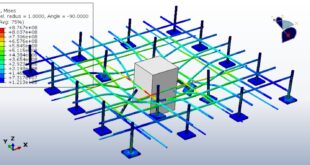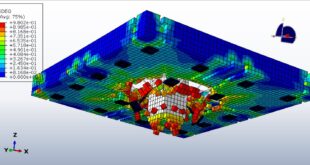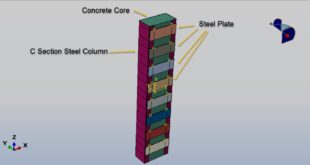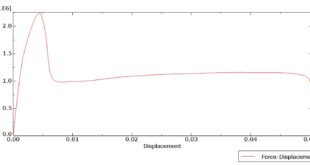In this tutorial, the Simulation CEL explosion near a stone wall covered with cloth, and concrete in Abaqus has been investigated. The stone wall and cloth, concrete are modeled as three-dimensional solid parts. The TNT is a solid sphere, and the Eulerian domain is a 3D body. You can see a figure of the assembled parts below
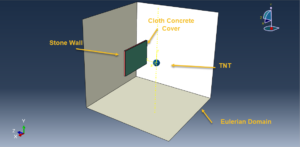
To model stone behavior under a huge amount of pressure, the Johnson-Holmquist material model is selected. Material model Johnson-Holmquist is used for modeling the behavior of brittle materials under large pressure, shear strain, and high strain rate. It is widely used for simulating ballistic impacts and blast loads
To model TNT behavior, the JWL equation of state is considered. The Jones-Wilkens-Lee (or JWL) equation of state models the pressure generated by the release of chemical energy in an explosive. This model is implemented in a form referred to as a programmed burn, which means that the reaction and initiation of the explosive are not determined by shock in the material. Instead, the initiation time is determined by a geometric construction using the detonation wave speed and the distance of the material point from the detonation points
To model cloth concrete cover, the Concrete Damaged Plasticity model is used. The model is a continuum, plasticity-based, damage model for concrete. It assumes that the main two failure mechanisms are tensile cracking and compressive crushing of the concrete material
The dynamic explicit step with a specific time duration is selected. The proper interaction and constraints are assigned to all parts. The volume fraction method is used to define the volume of the TNT and its location inside the Eulerian domain. The proper mechanical and Eulerian boundary conditions are assigned to all parts. The mesh should be fine to have better results
After the simulation, all results such as stress, strain, damage, tension and compression damage, wave propagation, and blast density are available. You can see some figures for the results below
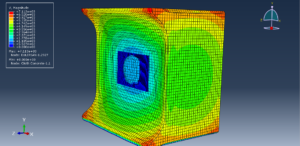
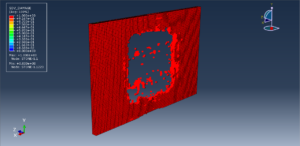
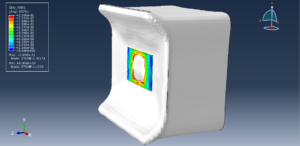
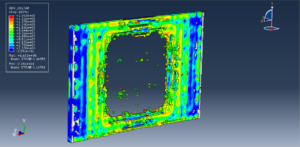
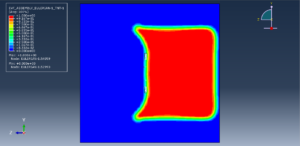
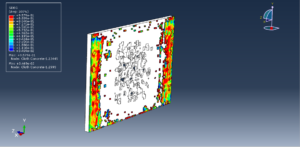
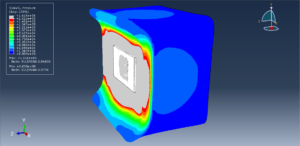
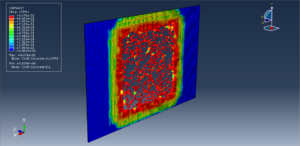
You can provide CAE, INP, and English video files of this simulation here. The cost of these files is Thirty Euros. you can click on the bellow bottom to begin the process
You can purchase the tutorial through a PayPal account, a Visa, or a Master card, just before payment, send me an email to this address: karampourp@gmail.com
 Abaqus tutorials Abaqus tutorials
Abaqus tutorials Abaqus tutorials
